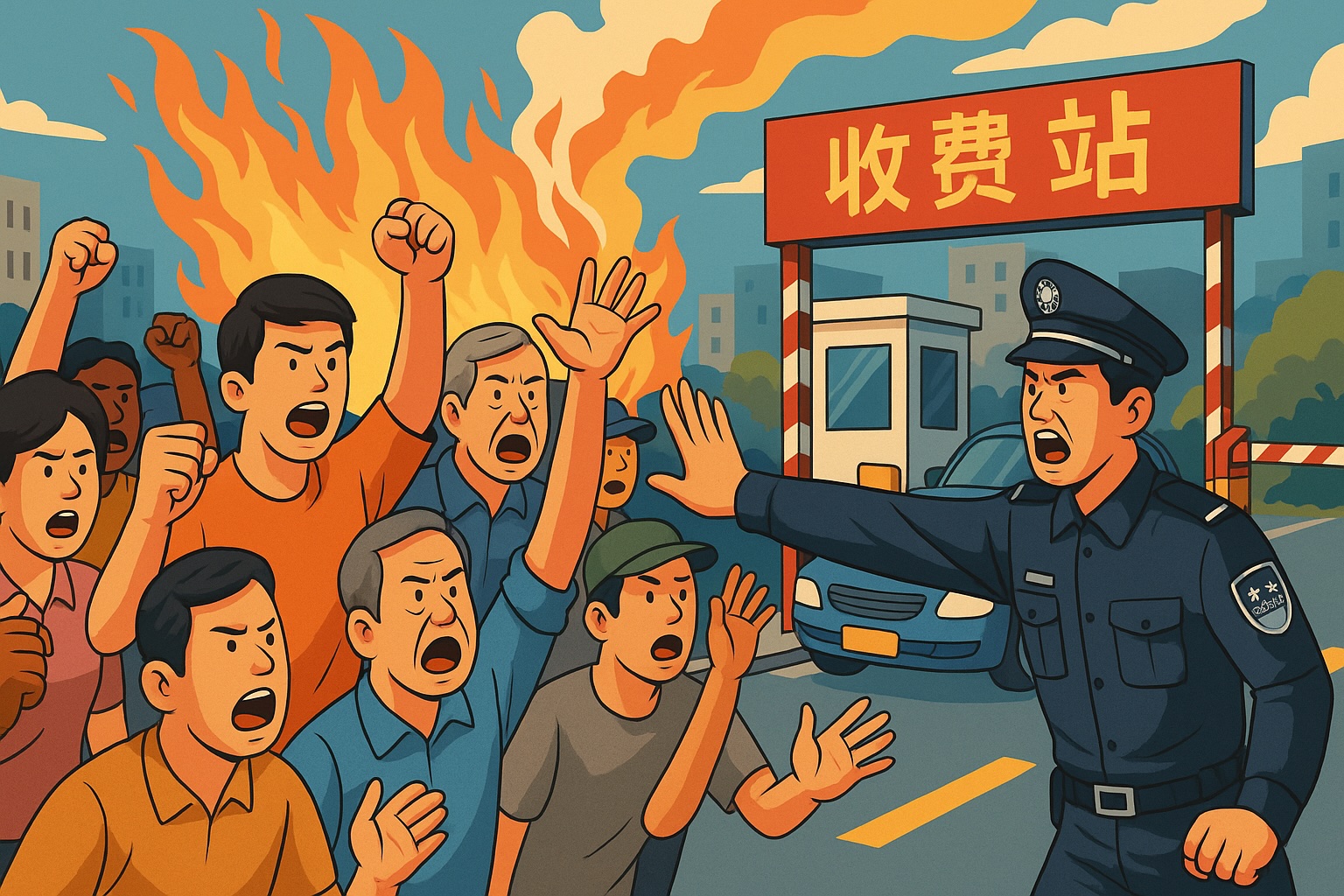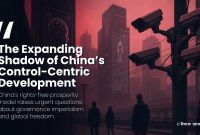The Boiling Point: China’s “Village Gating” Crisis and Growing Public Dissent

In the shifting sands of China’s socio-economic landscape, the once-silent frustrations of the public are beginning to echo louder than ever. From the urban villages of Guangdong to the suburban fringes of Shanghai, a grassroots wave of dissent is emerging—not over grand political causes, but something far more quotidian: toll fees. Known as “village gating,” this phenomenon of installing checkpoints and charging entry and parking fees has snowballed into a symbol of broader public discontent, revealing the Chinese Communist Party’s deepening disconnect from ordinary citizens and the desperate measures local governments are taking to paper over financial shortfalls.
The heart of this tension lies in China’s weakening economic posture. Decades of rapid industrial growth have given way to manufacturing slowdowns, widespread unemployment, and mounting municipal debt. In response, some local authorities, saddled with obligations but starved for funds, have turned to informal and often irregular revenue streams—most notably, the imposition of entry tolls on roads in villages and towns.
One pivotal episode unfolded on June 2nd in Yangyong Village, Dongguan City, Guangdong Province. Hundreds of migrant workers gathered to protest an 18 yuan (~$2.50 USD) entry fee that felt, to many, more like extortion than regulation. The policy, seen as unjust and discriminatory, ignited fury among an already economically squeezed population. For workers eking out a living amidst factory closures and wage stagnation, this seemingly trivial fee marked the last straw. The confrontation escalated rapidly, and even a show of force from the police failed to contain the unrest. Authorities ultimately dismantled the fee stations—an unusually swift retreat in a system known for its rigidity.
But Yangyong was just the tip of the spear. In March of the same year, residents of Shangdi Village also protested against a monthly parking fee of 170 yuan imposed only on non-locals, while exempting locals and businesses. In December 2024, villagers in Datan responded to a newly-installed toll gate with direct action—smashing the booth in protest. Similar incidents have echoed throughout Guangdong and beyond, suggesting a pattern of deepening grievances over what many see as legalized exploitation.
What makes these confrontations particularly potent is the demographic at the forefront: migrant workers. Often the invisible engine of China’s urban economy, these individuals are being asked to shoulder an increasingly disproportionate burden of public costs. With little political leverage, no social safety net, and now reduced access to public infrastructure, their protests mark a significant shift—one driven not by ideology, but lived experience.
Critics argue that these toll policies represent more than just fiscal desperation—they betray a systemic erosion of accountability. Many gates, as reported, are constructed on public roads in violation of state regulations. Village committees and affiliated companies—some with alleged ties to higher authorities—reportedly profit handsomely, while ordinary residents see no benefit. Village chiefs are accused of raking in tens of thousands in unofficial income annually. It’s a scenario reminiscent of the feudal levies of old, updated for the digital age.
Moreover, a February 2022 policy shift re-authorized the charging of such fees, despite earlier rulings against them. The reintroduction of tolls, particularly targeting non-local vehicles and tenants, appears less about infrastructure management and more about exclusion and financial triage. In Dongguan alone, more than a third of communities reportedly have toll systems in place, transforming basic movement into a premium service.
The outrage isn't confined to Guangdong. In Shanghai’s Pujang District, residents and tenants already paying high rent found themselves subjected to additional "road usage" fees despite no corresponding improvement in local services. Online platforms lit up with commentary decrying the increasingly aggressive monetization of daily life. "Everything is taxed now. Even parking lots have become revenue sources," noted one user. Others expressed fears that the party-state was bleeding the populace dry in a bid to delay financial reckoning.
A former journalist warned that China was nearing a breaking point, likening the situation to a pressure cooker about to explode. He noted that citizens were shifting from silent endurance to organized resistance, expressing discontent despite pervasive censorship and surveillance. Even small-scale protests were seen as signs of rising public courage and political awareness. While some netizens speculated these acts were precursors to a broader revolution, such claims remained uncertain. Still, the protests signalled deeper frustrations: government efforts to tackle economic hardship through arbitrary measures had backfired. The “village gate” demonstrations were not isolated—they reflected a chronic dysfunction within China’s political economy, revealing cracks in its social contract and the limits of top-down control in managing grassroots dissent.
If this trajectory continues unchecked, the Chinese government may face a rising tide of dissent fuelled not by foreign provocateurs or grand political manifestos, but by the cumulative weight of daily injustices. A single spark, it seems, can still light a prairie fire.




![From Kathmandu to the World: How Excel Students Are Winning Big [Admission Open]](https://www.nepalaaja.com/img/70194/medium/excel-college-info-eng-nep-2342.jpg)
